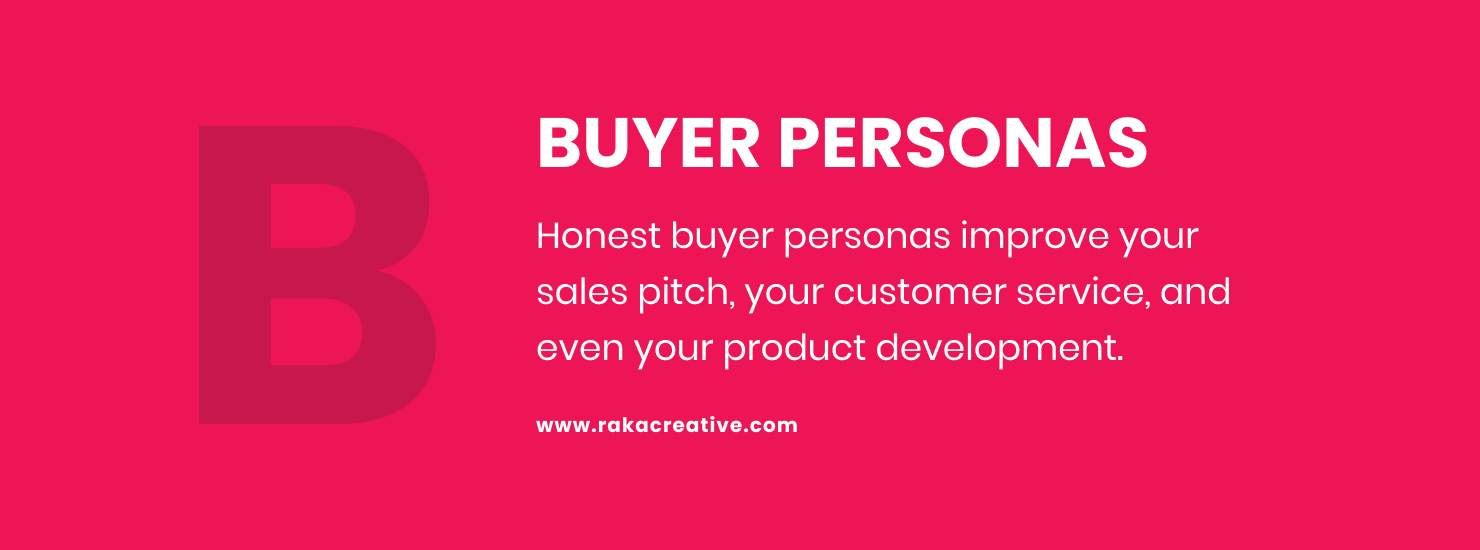Creating an effective inbound marketing strategy can be a heavy lift for companies with a small marketing department. You know you should be creating valuable content and optimizing for search, but you and your team are always short on time. Despite your efforts, your blog content ends up lacking focus on goals, your social media accounts are like a ghost town, and your site has dropped off of search engine result pages.
If any of this sounds familiar, don’t despair. This post is all about what makes an effective inbound marketing strategy and how you can create one that will keep your marketing team focused on the company’s goals.
Table of contents
- What is an Inbound Marketing Strategy?
- Discovery for a Smarter Strategy
- Setting Goals You Can Achieve
- Building Your Inbound Marketing Campaigns
- Measure and Evolve For Long-Term Success
- Let Your Strategy Be Your Guide
What is an inbound marketing strategy?
A good inbound marketing strategy focuses on attracting customers instead of pursuing them with in-your-face, interruptive sales tactics. Unlike an outbound marketing strategy that uses tools like direct mail and cold-calling, an inbound marketing strategy employs methods and tools that will help customers find your business through organic search and social media. If you’d like to learn more, check out our inbound marketing definitions.
Any inbound strategy builds on the four stages of the inbound methodology of attract, convert, close, delight. There are dozens of tactics companies can use to advance strangers and visitors into customers and promoters, but you can’t invest in all of them equally all the time, nor should you.
So how do you decide where to spend resources, which social media channels to focus on, and whether your website needs a redesign? We’ve helped businesses create inbound marketing strategies since 2012 and have learned that companies must understand their target audiences first if they want a marketing campaign that’s going to deliver.
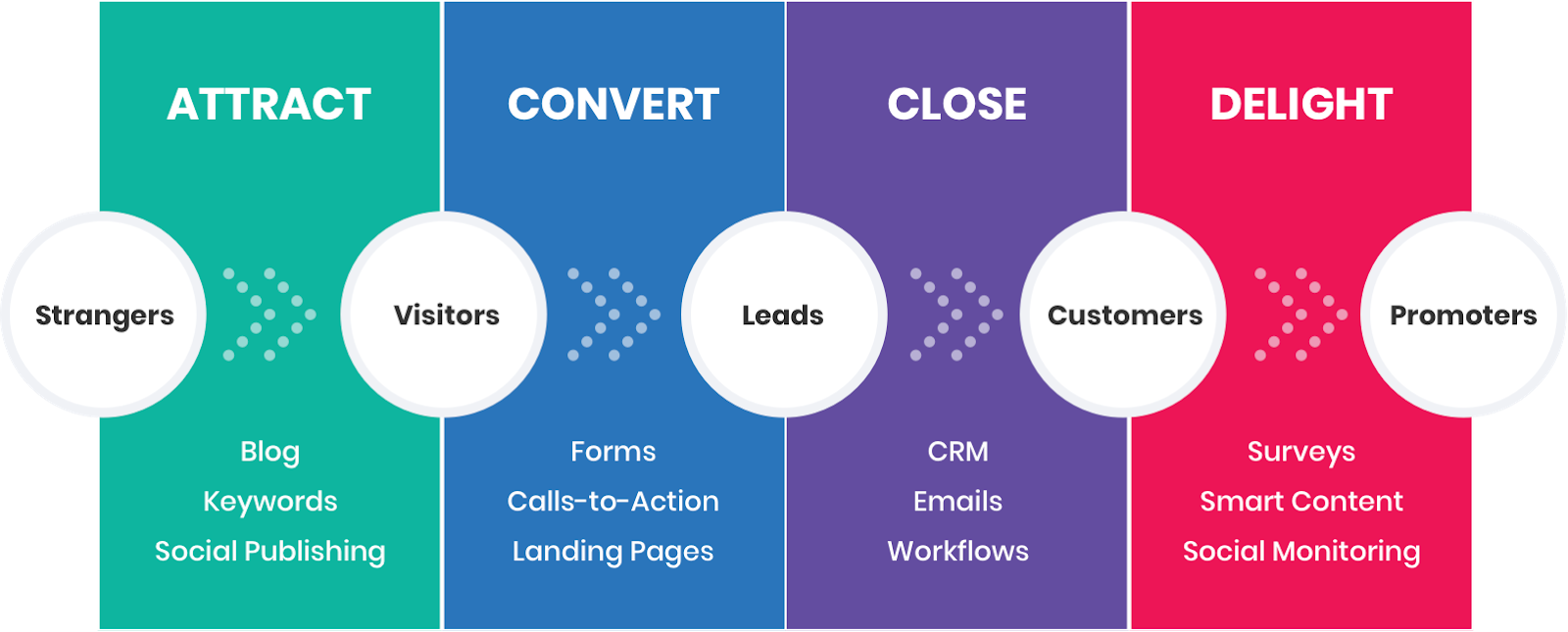
Discovery for a smarter strategy
At Raka, our inbound marketing strategy process begins with discovery. This is when we get to know your company, products, customers and target audience, and where you stand in the marketplace. It’s also a look at the marketing tactics and tools you’ve been using to understand what’s working, and what’s not.
I can tell what you’re thinking—maybe I’ll just skip this step. Who knows your business better than you? It’s tempting to pay short shrift to a good, hard look at your company’s marketing efforts, but discovery sets the foundation for the rest of your strategy. Knowing where you are helps you figure out where to go next.
Here are some discovery-stage efforts your company can do to get a clearer picture of your marketing efforts to date:
- Competitive analysis
- Benchmarking
- Documentation of current processes
- Website audit
- SEO audit
- Social media audit
- Buyer personas
More about buyer personas
Buyer personas are such an essential part of an inbound marketing campaign it’s getting its own section here. Buyer personas are not just some document that ends up collecting dust on a shelf. They help you define and segment your audience so your marketing and sales teams can create content and service solutions that serve your customers better. Essentially, buyer personas inform all future marketing efforts, from SEO to social media.
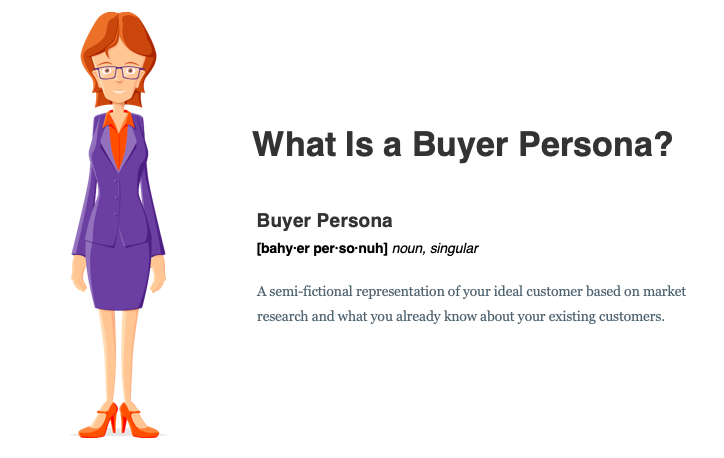
How to build buyer personas
Start with your target audience. There are probably a few different segments to it, right? If you sell chocolate chip cookies, your target audience might include moms buying for the family, as well as adults who like a treat now and again (who doesn’t love CCCs?). Maybe you also discover that a big segment of sales comes from college students who like your cookies as a late-night snack. There are three personas right there.
Gather what you know about them, including how they’re most likely to engage with your company and the feedback they’re giving you on social media, via email, or other channels. Think of some questions you’d love to ask them, like how do they decide what cookie brand to buy, or does price matter? Try to put yourself in their shoes to answer these questions (based on feedback you gathered). You may also want to run targeted surveys to get more information.
The last step in building your buyer personas is to collect all your data in one place. We’ve built our own buyer persona template, which you can download for free, that creates a snapshot of your buyer persona for future reference. When working with clients, we refer back to these buyer personas often to craft blog posts or redesign a website. Knowing what our clients’ customers want makes our work much easier, and will make your life easier too. Here’s an example of what a buyer persona can include:
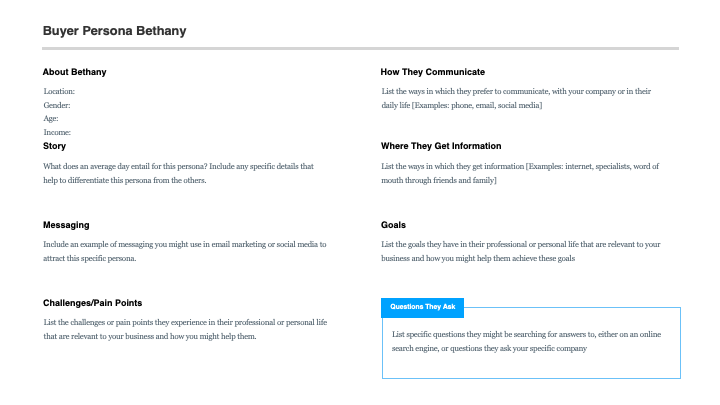
Setting goals you can achieve
It’s what we’re all working towards right? Higher traffic, better conversion rates, more leads, more sales. Surprisingly, some companies have a hard time being specific about their goals, or have so many lofty goals they’re struggling to accomplish even one. During the goals stage, you will examine your key performance indicators (KPIs), your company’s technological capabilities, and of course, create goals.
Here at Raka, we like to use SMART goals. SMART is an acronym that stands for:
- Specific
- Measurable
- Attainable
- Realistic
- Time-bound
A SMART goal is not just, “increase sales.” It is far more fine-tuned. For example, your past email marketing campaigns have resulted in an increase in sales-qualified leads. A good SMART goal would be increasing sales-qualified leads by 25% by the end of Q1 through a series of email marketing promotion campaigns.
If you want to learn more about setting SMART goals, check out this webinar from HubSpot called, “The Secret Power of Setting SMART Goals.”
Nearly every company has a goal employees are striving toward. Having goals with specific metrics to shoot for gives your team focus when defining tactics, creating campaigns, and selecting tools you will use in your comprehensive online marketing strategy.
Building your inbound marketing campaigns
You’ve done the research, set your goals, and have a clear idea of where you want to go. Now it’s time to get to work and set up targeted campaigns that will move leads down the funnel. Here are six tactics most successful inbound marketing strategies use. Are these the only areas you will use? Probably not, but it’s a solid start for any inbound marketing plan.
1. Website design
When you look at your company website, does it clearly show what your business does? Is it easy to navigate? People looking for a solution to their problem will decide in a matter of seconds whether your website (and your company) can help them. You want a site that’s designed to lead users toward conversion. This includes well-placed CTAs, thoughtful navigation, and a homepage that invites interaction.
There is no cookie-cutter solution to web design, but there are best practices. Consider a website audit to see if the design and content match these best practices and are achieving your intended goals.
We know you’ve heard this before, but it’s worth asking again—how does your site look on mobile? With 58% of Google searches done on mobile, it’s more important than ever to have responsive web design. What’s responsive web design, you ask? It’s a way of building sites so they will render well on different sized screens. Look at Wired magazine’s website and how the look of the homepage differs depending on the screen width.
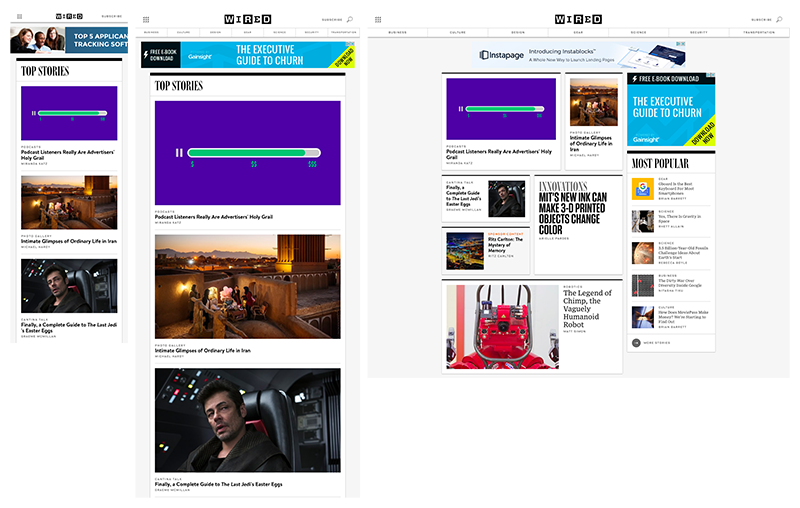
On mobile, the sidebars are gone and the content has moved below the top stories. It’s easy to find what you’re looking for when viewing on your phone, either in the navigation, drop down menu, or by scrolling the page. On desktop, the top stories pop, the navigation is simple, and the most popular stories are easy to find (and very clickable).
2. Calls-to-action
Your website is a key conversion tool and there should be plenty of calls-to-action to drive users to the next step along the buyer’s journey. There are plenty of case studies out there aiming to find the secret to the best CTA button, but really it just requires a little creativity and the desire to experiment.
When drafting your CTAs, be direct about what you’re asking. If the CTA mentions a benefit, it’s an added bonus.

In this Netflix example, the text above the CTA button is enticing and reassuring. By the time you get to the bright red button, “Join Free for a Month,” buyers are thinking, “who wouldn’t want that?”
Sometimes the best choice for a button is two buttons, especially if you have two distinct personas you are trying to reach and segment on a single page. This Bark Box CTA is a great example.
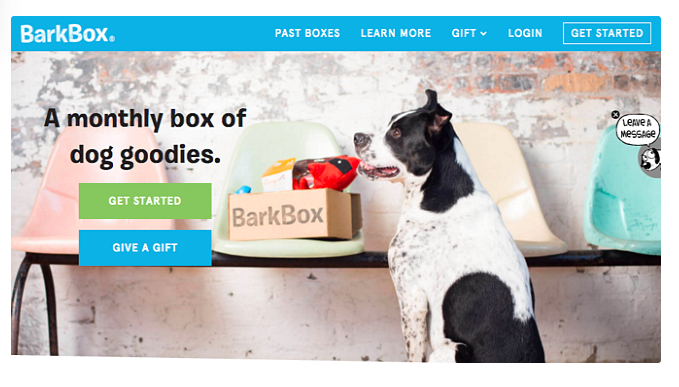
This pet product subscription service sends boxes filled with dog treats and toys. You can buy it for your own sweet pup, or you can give it as a gift. The buying process is different for these audiences, and the different buttons get consumers on the right path faster. Two buttons also allow you to track the audiences individually, giving you valuable data for future campaigns.
3. SEO
You know search engine optimization is the key to getting found online, but does your marketing team have a firm understanding of how to improve your SEO? Companies need a clear strategy to raise their search rankings, and a good place to start is by building a list of your target keywords. Even if your company already has a keyword list, it’s good to continually examine how your efforts to draw more visitors through search are doing, and how your competition is doing as well. Make sure to use more than one resource in your keyword research to get a comprehensive picture of your SEO. Here are some common SEO tools:
- Semrush: A subscription service great for both competitive research and your own analytics review. Semrush provides a snapshot of which keywords you and your competitors are ranking for and much more.
- Ahrefs: Another paid service that lets you run backlink reports on you and your competitors, find popular content by topic, and dive deep into keyword suggestions.
- Keywordtool.io: A free tool that pulls search numbers and keywords from Google, Bing, Yahoo!, and YouTube and provides sorting options similar to Google Keyword Planner.
- Moz Keyword Explorer: A paid tool from SEO experts Moz, Keyword Explorer gives you custom reports on a wide range of metrics, from monthly volume to opportunity.
4. Content creation
Our discussion about keywords segues nicely into content creation. We in marketing ask a lot of our content: that it aligns with company messaging; promotes products just enough without seeming pushy; includes keywords to boost SEO; offer visuals like video, infographics, motion graphics animation, and charts; and most importantly, drives people to convert.
To get content to perform well, it must be done thoughtfully and with goals in mind. Content planning includes updates on your site, with key search terms or topics as a guide to plan each blog post or page. There are hundreds of resources available to help companies create efficient and effective content plans. What’s often missing in these discussions is how to create content focused on your customers and moving them toward conversion, not just finding a way to squeeze in keywords. Remember, your content must offer value to your potential customers. (Be a helpful human!) This is where those buyer personas come in.
Using your buyer personas will help you plan content that’s valuable for the people you’d like as customers. Planning your content around the people you want to help will also show that your company can solve their problems. (This builds trust before your sales team even talks with them.) This content might be blog posts, videos, or content offers that ask them to provide personal information to access. But how do you know what kind of content will be most effective?
It’s all about the buyer’s journey.
The buyer’s journey will guide your content
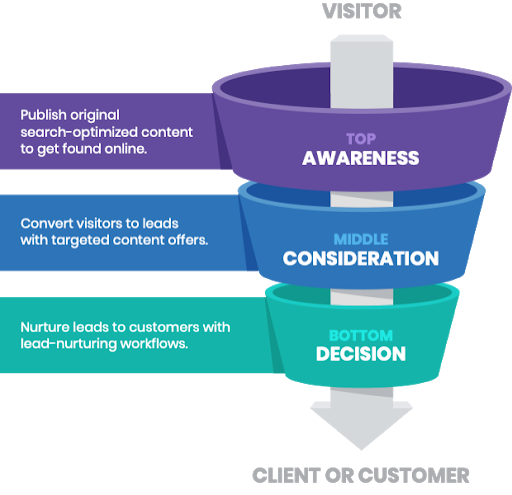
The buyer’s journey is the process buyers go through as they become aware of, consider, and decide to purchase a new product or service. In the Awareness stage, your potential customer is experiencing a problem and is doing research to understand and define the problem. When buyers are in the Consideration stage, they have identified the problem and are looking for solutions. In the Decision stage, the prospect knows the approach he or she wants to take, and is looking for the company that can best deliver it.
Here are some examples of the kind of copy to provide at each stage:
Awareness
- How-to videos and blog posts
- Checklists
- Guides
Consideration
- Webinars
- Case studies
- Surveys
- In-depth content offers
Decision
- Free trial or demo
- Consultation
- Video testimonials from happy customers
Planning content means thinking comprehensively. It’s not just about building the content. Consider whether you need a landing page, whether it will be gated or open, and how to promote it. Which leads us to the next section.
5. Social media
Social media is an important part of building brand awareness and growing trust in your brand authority. Social media has grown as a marketing tool largely because it’s where people are—79% of Americans have at least one social media account.
Building brand awareness is a long-term strategy that plants your company’s name in the minds of potential customers. Take for example this brightly-colored image SproutSocial created for its post on Pinterest marketing. The color is eye-catching, and the content tells users what this company does.
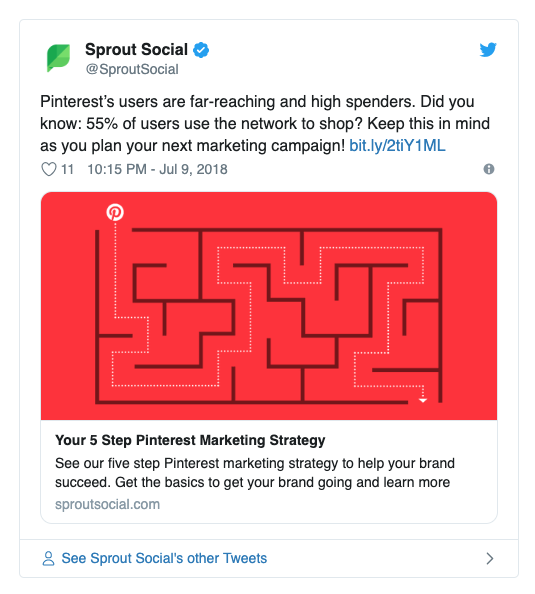
The content also does a good job of building brand authority. Leverage your website and blog content on social media to show you know your industry well and can serve as a resource. Here, Sprout Social is offering something concrete, “Your 5 Step Pinterest Marketing Strategy” as well as useful facts and a stat to strengthen what’s inferred—Sprout Social is an expert in marketing on Pinterest.
Don’t just rely on your own content to build brand authority. Post content relevant to your company from news and industry sites. It shows you are attuned to what’s happening in your industry. Even better, pull a statistic or interesting fact from the article that readers can use (without having to read the article). Third-party posts work best when they tell users, “We found this great content. Here’s something from it you might find useful.”
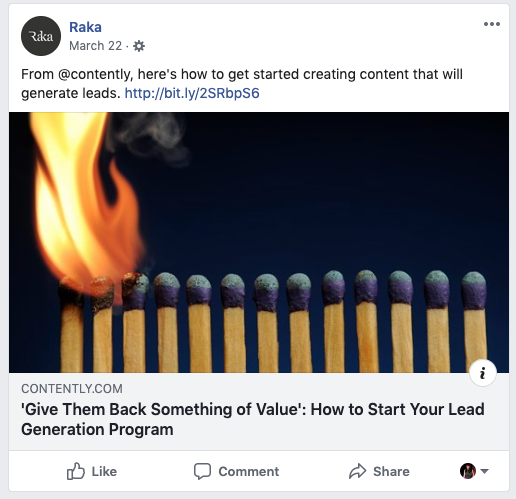
Using social media in your inbound marketing strategy doesn’t mean you’re on every platform at all times. Focus on the channels that are most used by your buyer personas and produce fun, informative, eye-catching posts they will want to click and share.
6. Email
Tell me if this sounds familiar. You looked at your last email campaign report, saw the open rate and wondered if it was even worth the effort. Email is something we all get too much of, but when was the last time you said, “Email is the best way to reach me”? Yesterday? Exactly. According to Statista, 85% of Americans look at email every day.
When it comes to building lists, they should be people who have already bought in, either by downloading a content offer, requesting a consultation, or signing up for updates. Someone who has expressed interest in your company before is far more likely to open an email from you than a complete stranger.
Email marketing is a fine balance between offering value and selling your products. Take for example this email from high-end children’s retailer Maisonette. It’s wishing users a happy Mother’s Day, touting its status as a mom-led company, and gives shoppers a chance to support other companies run by moms. Who knows what kind of products moms need better than moms, right?
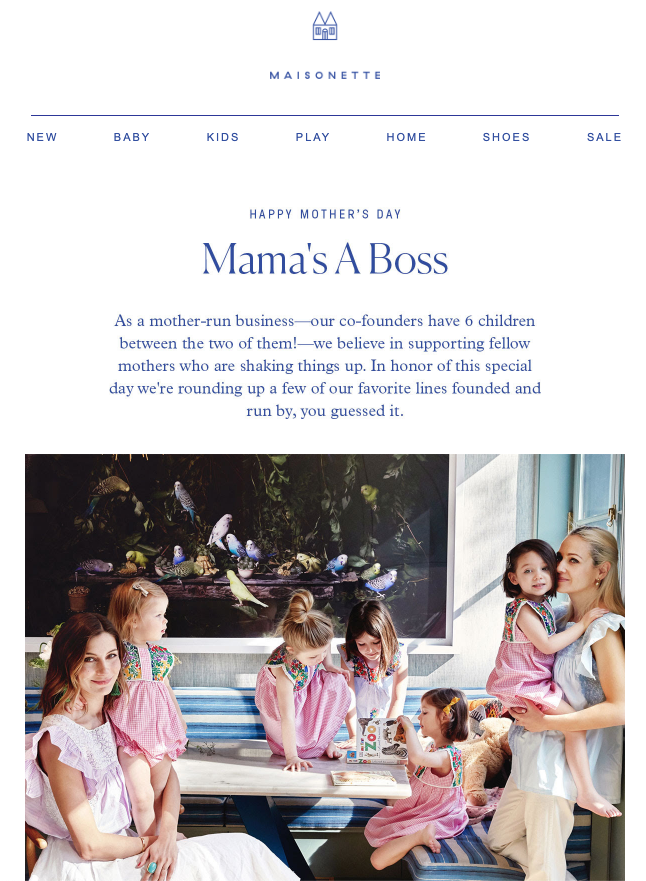
Measure and evolve for long-term success
All of the effort you put into your inbound marketing strategy will be wasted unless you are measuring results and tweaking methods based on those results. Collecting data on your campaigns’ KPIs shows how leads are flowing into the sales team, and provides insight on what’s working and what’s not. Knowing that, you can adjust so that your inbound marketing efforts start to become more effective.
Here at Raka, we use tools like Google Analytics, HubSpot, Moz, Semrush, HotJar, and more, to report on our client’s progress. Remember, reporting data on your inbound marketing progress is personal. Your KPIs are not the same as those at other companies. Spend the time to decide what you will track and how often you will report. Our long-term partners receive customized reporting either monthly or quarterly, which we review together and they use to determine next steps.
Let your strategy be your guide
In the day-to-day operations of your business, it’s easy to get sidetracked away from achieving your goals. That’s why having a comprehensive inbound marketing strategy is so valuable. It’s a roadmap that includes a clear picture of your audience, how you will reach them, and the kind of content to provide along each stage of the buyer’s journey.
The time you invest in creating an inbound marketing strategy is well spent, and will certainly make your marketing life easier.



